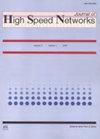New techniques for intelligent networks with machine learning
IF 1
Q4 COMPUTER SCIENCE, INFORMATION SYSTEMS
引用次数: 0
Abstract
each node integrates identity and behavior reputation. The reputation is dynamically updated by setting the new node evaluation period and phased update mechanism. Identity reputation is calculated by information disclosure and network characteristics, behavior reputation is calculated by information release and forwarding, and rewards or punishments will be given to self-correction of information behavior or blocking of bad information. The simulation results show that compared with the traditional trust evaluation mechanism, setting rewards and punishments guidance can improve the accuracy of reputation evaluation. At the same time, reputation incentive can also inhibit the interaction of bad information while promoting the consciousness of reporting. Blockchain technology and its applications are also important problems. The paper entitled “Scientific research information management based on blockchain technology”, the authors combine the existing achievements and requirements in real applications. The paper explains characteristics of the blockchain technology and analyzes its disadvantages in scientific research information management compared with the traditional methods. The paper puts forward some suggestions for applications to provide a reference for the effective application of blockchain technology in scientific research information management. For combinational optimization problem, authors propose a simple yet effective discrete artificial bee colony (DABC) algorithm for solving quadratic assignment problems (QAPs) in the work entitled “A discrete artificial bee colony algorithm for quadratic assignment problem”. Typical QAP benchmark instances are selected from QAPLIB in order to conduct the simulation experiment where common performance metrics are used to evaluate the algorithm. The paper also investigates the influence factors of the algorithm’s performance. The results show that the proposed algorithm is a quite effective and a practical new approach for handling QAP problems. This special issue presents some of the important research work in Intelligent Networks. We believe this special issue will benefit the research community towards identifying challenges and disseminating the latest methodolo-gies and solutions to machine learning.基于机器学习的智能网络新技术
每个节点都集成了身份和行为声誉。通过设置新节点评估周期和分阶段更新机制,动态更新信誉。通过信息披露和网络特征计算身份美誉度,通过信息发布和转发计算行为美誉度,对信息行为的自我纠正或对不良信息的屏蔽给予奖励或惩罚。仿真结果表明,与传统的信任评价机制相比,设置奖惩指导可以提高声誉评价的准确性。同时,声誉激励在促进举报意识的同时,也能抑制不良信息的互动。区块链技术及其应用也是一个重要问题。本文以“基于区块链技术的科研信息管理”为题,结合已有成果和实际应用的要求。阐述了区块链技术的特点,分析了区块链技术在科研信息管理中与传统方法相比存在的不足。本文提出了一些应用建议,为区块链技术在科研信息管理中的有效应用提供参考。针对组合优化问题,作者在《二次分配问题的离散人工蜂群算法》中提出了一种简单有效的求解二次分配问题的离散人工蜂群算法。从QAPLIB中选择典型的QAP基准实例进行模拟实验,使用常见的性能指标对算法进行评估。本文还研究了影响算法性能的因素。结果表明,该算法是处理QAP问题的一种非常有效和实用的新方法。本期特刊介绍了智能网络领域的一些重要研究工作。我们相信这一期特刊将有利于研究界识别挑战,传播机器学习的最新方法和解决方案。
本文章由计算机程序翻译,如有差异,请以英文原文为准。
求助全文
约1分钟内获得全文
求助全文
来源期刊

Journal of High Speed Networks
Computer Science-Computer Networks and Communications
CiteScore
1.80
自引率
11.10%
发文量
26
期刊介绍:
The Journal of High Speed Networks is an international archival journal, active since 1992, providing a publication vehicle for covering a large number of topics of interest in the high performance networking and communication area. Its audience includes researchers, managers as well as network designers and operators. The main goal will be to provide timely dissemination of information and scientific knowledge.
The journal will publish contributed papers on novel research, survey and position papers on topics of current interest, technical notes, and short communications to report progress on long-term projects. Submissions to the Journal will be refereed consistently with the review process of leading technical journals, based on originality, significance, quality, and clarity.
The journal will publish papers on a number of topics ranging from design to practical experiences with operational high performance/speed networks.
 求助内容:
求助内容: 应助结果提醒方式:
应助结果提醒方式:


